Writer Tom King has made a name for himself telling offbeat, unexpected superhero stories. From Batman to Mister Miracle to The Human Target, King is particularly adept at taking characters and concepts readers might already be familiar with and presenting them in new and interesting ways. That’s part of what makes his next project, the twelve-issue DC Black Label miniseries Danger Street, so interesting even before reading. King reteams with the Rorschach creative team of artist Jorge Fornés, colorist Dave Stewart, and letterer Clayton Cowles for a series that brings the stars of DC’s mid-70s series First Issue Special together for one sprawling story, and while some of those characters like Metamorpho, Dr. Fate, and the New Gods might be familiar to some readers, a majority of them likely are not, having never appeared anywhere again following their Bronze Age debuts.
It’s a wild swing to bring a group of mid-level-to-outright obscure characters together to headline a high-profile series, and the difficulty of selling it is something of which King is well aware. Ahead of the preorder cutoff date for the series debut, The Beat chatted with King about the origins of Danger Street, how the series fits with his previous work, and the weirdest characters he had to fit into the book.
Joe Grunenwald: Tell me a little bit about how Danger Street came about. What made this a project that you just had to work on?
Tom King: This is a hard one. This is a hard one to get across. Because I mean, you know, every editor in comics is dying to do their Dingbats. You know, who hasn’t wanted to do Lady Cop and the Outsiders, but not that Outsiders.
Grunenwald: These are all properties that have been itching for reboots.
King: Yeah, they have their own TV shows. They have their own video games. It’s time they made it back into comics. [laughs] So DC put out a hardcover of First Issue Special. I have no idea why they did it. I should ask them. I suspect it’s because I saw on Bendis‘s blog that he was going to do something with them, so maybe some wires got crossed. It arrived to my door because I get comps, and I put myself pretty high up on old comic book history knowledge and I had never heard of First Issue Special. I was ignorant of it, and I got this book and I was like, ‘What is this very strange book?’
So I read it, and it was strange story after strange story after bizarre character, and not in a wonderful way. Like, these aren’t the most quality comics – I love comics of the era, love the creators that are in this book, [but] this was just not them at their best game. That’s not a coincidence. I mean, you can ask Mike Gold who was there at the time. These were stories that had just sort of been thrown in the waste bin, and they were just looking for a place, after Showcase had closed, to sort of get them out. So this was no one’s best work, but I became mesmerized by them, because there were really some gems in there. And it sparked this idea that, like, how can all of these characters that are so weird and so bizarre, from Lady Cop, which is almost like this Punisher-esque story, to the New Gods with these revamped Don Newton suits, to the Dingbats of Danger Street, to Atlas, how can they all exist in the same universe? How can the DC Universe be a cogent thing if all of these characters exist at the same time inside it? And I was like, ‘Well, that’s a great question. I wonder if, as a writer, I can answer that, if I can make a story where all of these characters – there’s 13 issues, but some of them are team issues, so it’s about 24 characters, depending on how you count – I was like, ‘Can I write a story [where] all these characters exist in the same world and are interacting with each other? And that slowly became Danger Street over a year. It was almost a dare.
Grunenwald: I was gonna say, it sounds like you almost came up with this just as a challenge for yourself to see if you can make it work.
King: Yeah, I mean, there were a few things that I was looking for at that time. Number one, Jorge and I were finishing Rorschach, so I was looking for our next big project. I was looking for something specifically that Jorge would shine at. I’ve done obscure characters before, but I’ve done a lot of, with the exception of Omega Men, I do Mister Miracle, I do Strange Adventures, [and] they’re usually one perspective books, usually from someone’s perspective, or maybe at the max two or three. Rorschach, Vision, even Sheriff of Babylon’s just three characters. So I don’t want to be, you know, complacent. I don’t want to stand still and sort of drown. So I wanted to challenge myself. I was like, I want to do something bigger and more epic. I probably should have gone to like six characters. Going from three to twenty-four was a gap. [laughs] But, you know, you’re always looking to push yourself. You’re always looking to not be complacent and do the thing you just did again, you want to, you know, find some other magic.
Grunenwald: Sure. So is there is there any foreknowledge of First Issue Special required? Or have you included any easter eggs for the one superfan of that series to discover?
King: [Laughs] Yes, he’s gonna be super happy, that one superfan. I was at Baltimore Comic Con just recently [and] I had dinner with Walt Simonson, who drew the Doctor Fate issue, and he remembers it fondly, so I’ll put in some stuff for Walt so he can recognize it. [laughs] It’s one of the great stories, the Marty Pasko Dr. Fate story there is actually really brilliant. No, there’s no prerequisite. You do not have to read these First Issues Specials. If you find them in a quarter box, I recommend you pick them up because they’re just fun, old, beautiful, early Bronze Age comics. But no, you don’t need to know it. If the Dingbats of Danger Street sounds as strange to you in your ear as it does coming out of my mouth, that’s perfectly fine. You’re exactly in the right place to read this book. You need no knowledge of any of these characters. I mean, I assume if you’re a DC comics fan and you’re reading this book, you’ll know some of them. You’ll know who The Creeper is. If you watched cartoons like we all have, you know Creeper, you know Dr. Fate, you probably know Darkseid’s in it because the New Gods, you know, you’ll know some of them. You’ll see some familiar faces. If you played knockoff He-Man toys like I did as a kid, you probably know Warlord.
Grunenwald: Yes, the Remco Warlord toys. Those are great
King: They were, they were awesome. Those are the ones when, like, you asked your mom, ‘Can I have the $4 He-Man,’ ‘No, you can have the $2 Warlord,’ and you’re like ‘Good enough! He’s got a bare chest and I’m in.’ [laughs]
Grunenwald: I was curious why Bakersfield, California as a setting for for some of the characters in this book? Is there a specific reason that you picked that town?
King: I don’t know. It’s strange, I guess. I’m from California, I’m from Los Angeles, and my father, when we were kids, we used to drive out north and east into Central California. It’s such a weird state, right? Because it’s hugely populous but it’s all on that little strip by the coast. You know, San Francisco, San Diego, LA. They’re all just, you know, kind of clutching at the beach. But it’s a very thick state, once you go past it, but it’s just this horrible desert that’s between you and Arizona and Nevada.
My father used to drive us around that desert, and we’d go through into these very – and I was from this huge city of LA – and we’d go into very, very small towns where you’d go to a diner and, like Cheers, people wouldn’t recognize you at the diners. And so when we used to go camping, we’d kind of go up in that area, and so that sort of became, as a child, my vision of small town America, it was only the small town that I ever saw. So I think that kind of got stuck in there. So that was the idea that it’s sort of this part of California where it’s hot and rural, and people forget it’s there. And then there’s some great comic talent that comes out of that area. Lee Bermejo‘s from there. And my old editor, Jamie Rich, is from there, so I’d heard him talk about it all the time.
Grunenwald: Nice. So the structure of the book is that there’s a narrator, telling the story sort of as a fairy tale. How did you land on that fairy tale motif?
King: Oh so you’ve read the book?
Grunenwald: I’ve read the first issue.
King: You’ve read the first issue. It’s pretty strange, right? I’m gonna write a normal book one of these days, man. It’s just gonna be people punching.
Grunenwald: [laughs] I have so many questions, but they’ll be off the record.
King: I’m ready. [laughs] I really shouldn’t admit that I’m stealing from somebody, but what the hell, I might as well steal from the best. When I was a kid, I was probably 11 or 12, my brother was a musician and went to a very fancy LA Public School for arts. It’s like the Fame School of LA. And they put on Into the Woods, so we went to see it, and to me it was as good as Broadway. Obviously LA has some some talent for acting, and I was just blown away. It was the full thing, it was first act and second act, which they usually don’t perform in high schools, and to me, it was like the first time I’d seen, for lack of a better word, deconstruction of a world. Like, wait a second, Cinderella exists in the same world as Little Red Riding Hood, exists in the same world as Jack and the Beanstalk? And somehow, they all collide together, and it creates this sort of meta narrative of, what are these stories about, and why are we telling them? And we can sort of reach deeply inside these characters and sort of tear them apart and put them back together. That might have had some impact on my writing in the future. So since I was kind of redoing that, I was tributing it, so it starts with the same words that Into the Woods starts with, which was ‘Once upon a time, in a far off kingdom, there lived…’ So it’s a tribute to Stephen Sondheim.
Grunenwald: Gotcha. I was in a high school production of Into the Woods, so I have a great fondness for that show.
King: Yeah, you understand, right? I thought it would just be me and Howard Chaykin who would get it. Yeah, it’s the best, it’s my favorite.
Grunenwald: Do you have a favorite character or set of characters that you have come to love writing in this series?
King: Yeah, I wrote this during a period, which hopefully won’t end, where I was writing my comics as a novel. So I wrote all 12 issues in a row, so it’s all done. It was mostly all done even before Jorge started the first issue, which is just the way schedules work. The stars of it are Lady Cop, who, it’s just the silliest concept, but she actually has an interesting origin story, and her comic is beautifully drawn by John Rosenberger, and Nonfat from the Dingbats of Danger Street. And I really like, eventually you’ll see Manhunter and the assassin, Codename: Assassin, become major characters. I loved writing them. I mean, all of them were joy, but maybe those are my favorites.
Grunenwald: On the other end of that, you know, given how disparate they all are, were there any characters that you were like, how am I going to fit this character into this story?
King: No, I mean, the idea came to me pretty fast. I knew right away with 24 characters that this is not a story that everyone was going to come out of alive. So I was like, ‘Okay, I’ll get less characters as I go, because there will be big deaths.’ But I mean, the hardest ones were the Outsiders because the Outsiders are the most bizarre – and no offense to Joe Simon who was one of the titans of our industry – but it’s just an absolutely unreadable comic book. They’ve only been used once after, and this was a background joke in a Grant Morrison comic. And for good reason. The comic is completely nonsensical. I challenge you to read it and tell me what’s going on. It’s not even nonsensical and you’re like, ‘Oh, this guy was high when they were doing it.’ This was like, this guy slipped and dropped his typewriter while they were doing it. It’s not even, you know, like Jim Starlin, 1972 incoherent, It’s like a blind penguin writing it incoherent, it’s very bizarre. But yeah, putting the Outsiders in, because they have no personalities. They’re completely hard to differentiate, [so] finding personalities for each, that was a challenge. It was just challenging to remember their names and who they were. There’s like three Lizard Larrys and it’s very complicated.
Grunenwald: Talk a little bit about what Jorge is bringing to this book. You guys have worked together a few times before now on Rorschach and on Batman. How does his work here compare to your previous collaborations?
King: Jorge is one of the geniuses of our industry. I was lucky enough to work with him on Batman, I was lucky enough to be the guy he tweeted at, because he used to be just like a random dude who’s fixing cars in Spain who tweeted at comic creators, and everyone’s like, wait a second, there’s a genius artist. It was like a Good Will Hunting situation, you know, finding him. What he brings is my favorite thing in comics, which my buddy Mitch Gerads is the master of, where, these are very absurd people and very absurd concepts and he renders them in a way that makes them very real. His style now reminds me of my buddy Lee Weeks. ‘Quietly epic’ is the way I would put it. He knows how to drag these superheroes into the real world, but still be able to pull the camera out for specific spectacular action.
When he first came on the scene everyone said, ‘Oh he just looks like David Mazzuchelli,’ as if that was a bad thing. We’ve been looking for David Mazzuchelli for 40 years, I’m glad we found him again. What David Mazzuchelli does to Batman: Year One is very much analogous to what poor Jorge does to the Dingbats of Danger Street. It’s amazing. And what’s amazing about Jorge is, this is a very hard book to draw. If I had given it to my buddy Clay Mann, he would have probably just driven up from Florida and punched me in the face. It’s a ton of characters, it’s a ton of panels, it’s very complicated storytelling, because each book has six plots that are kind of overlapping. And Jorge handles it with complete gentlemanly aplomb, just like, ‘Yep, I got it.’ And he just gets it done, and does it perfectly. And as happens with a lot of artists, he’s even leveling up. The pages are even getting better as he goes, which I’m amazed by.
Grunenwald: So where do you personally see Danger Street fitting in with the rest of your work? I know you’ve talked a little bit about doing a multiple-character book versus one with just one or two sort of focus characters, but outside of that, are there themes or elements that you’re exploring here that you’ve wanted to dig into more from previous books?
King: I mean, it’s definitely the vein of, if you’re enjoying Human Target, or if you enjoyed Vision, or you enjoyed Mister Miracle, it’s in that vein of, you know, a 12-issue contained series. But the themes are completely different. You know, Human Target and Gotham: Year One are very much about these noir elements. Mister Miracle and Strange Adventures are very much these kinds of family dramas. Danger Street is something entirely different. It was written at the height of the pandemic when I was stuck inside, but it’s about the connections we all have between us, sort of these invisible strings that bind us and pull us together and what happens when they crack apart. Yeah, it’s something different.
Grunenwald: Gotcha. You’re working with the New Gods again. I think this is the first time you’ve done anything with them since Mister Miracle. Is there any sort of throughline between Darkseid’s appearance there eating his vegetable tray and his appearance in this book?
King: I’m gonna treat Darkseid the same as I always treat him, which is just sort of this ultimate evil. Like just the worst of humanity, and the worst instincts of anyone, is who Darkseid always is. But I very much look at what [First Issue Special] was, and the New Gods issue was the 13th issue. I always went back to the First Issue Specials, not where they went after that but just those actual thirteen issues, and in that issue that was almost like a soft reboot of the New Gods into more superhero characters by Gerry Conway and Don Newton. So these New Gods are not as Kirby-ish, I would say, as the New Gods in Mister Miracle, which was very much a love letter to Kirby and very much trying to get at sort of what Kirby was putting forward with Darkseid, but in a modern way. These characters are just a touch lighter than what Kirby had. If you read the Don Newton New Gods, they are a little lighter than sort of the originals in terms of mythics or power.
Grunenwald: You’ve mentioned Darkseid, are any of the other New Gods gonna pop up? Are we going to see Orion in his superhero suit?
King: You will see Orion., but he’s in his traditional suit, not his superhero suit. I left it up to Jorge and he drew the traditional look. You’ll see Orion, you’ll see Highfather. You won’t see Barda and Scott, just because those are two characters I wasn’t ready to get back to. I wasn’t quite ready to write Scott and Barda again. So those two won’t be popping up. Mostly it’s Highfather and Darkseid and Orion. Those are the main New Gods.
Grunenwald: Is there anything else that you want readers to know about Danger Street?
King: I have no idea why you would pick up this book, readers. This is a hard sell, I’m not gonna lie to you. Normally, you know, I would say, ‘this is a Batman book like you’ve never seen before,’ or, you know…what are other sales pitches… ‘this will change DC continuity.’
Grunenwald: ‘Everything you know about Lady Cop is wrong.’
King: [laughs] ‘Everything you know about Lady Cop is wrong.’ No, none of that is true, this will not change DC continuity. This is not a Batman book, Joker does not appear halfway through to kill some major character. There’s no easy way to sell this except to say that these are characters you’ve never met before, and I think you’re gonna fall in love with them. To me, the best of comics is when we can sort of connect to the history of the medium and make the old modern, so that when you go see the Guardians of the Galaxy in the theaters and you’re like, ‘Whoa, Gamora is amazing,’ that’s what I’m going for. I’m going for that first time you walked into Guardians of the Galaxy and you realized that characters that were obscure are actually central to your consciousness
Grunenwald: Reading the first issue, I think it was a lot of fun, and I think part of the fun is like, I had the characters in my head thinking, ‘How is this character gonna show up? How is this character gonna show up?’ And so seeing how they all come together was a lot of fun.
King: I think at the beginning the interest of this will be the puzzle, like can this actually work. And it does, every single character has a big moment and an arc. So come see me walking a tightrope and see if I fall off. For nothing else just come see that. Tom is going to take a motorcycle across the tightrope, and we’ll see what happens. And he’s bringing poor Jorge Fornes, a genius of art, with him and hoping he doesn’t break him mentally.
Danger Street #1 (of 12) is due out in stores and digitally on Tuesday, December 13th. The final order cut-off date for the debut issue is Sunday, November 13th.


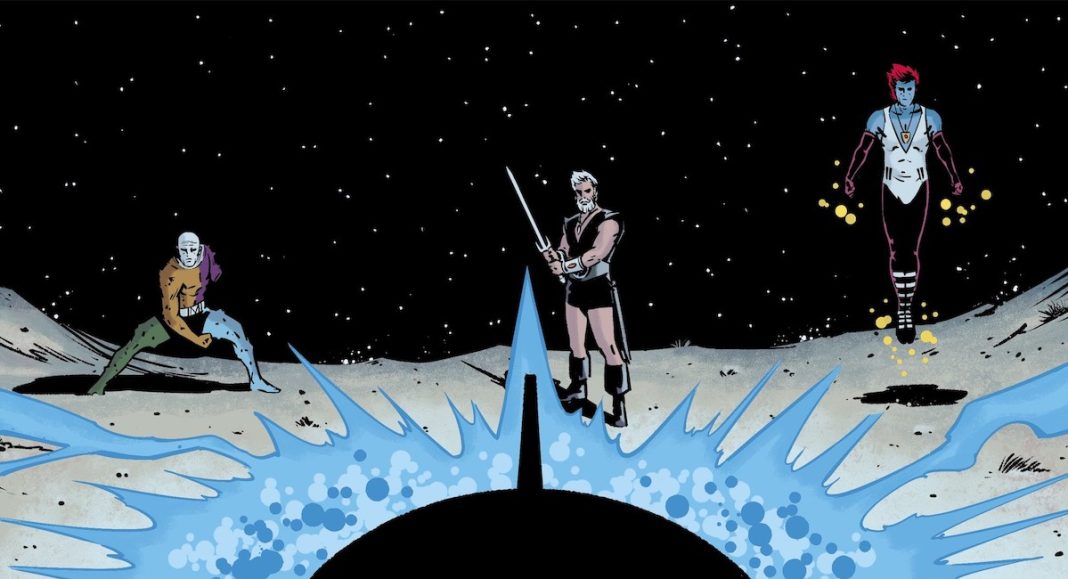
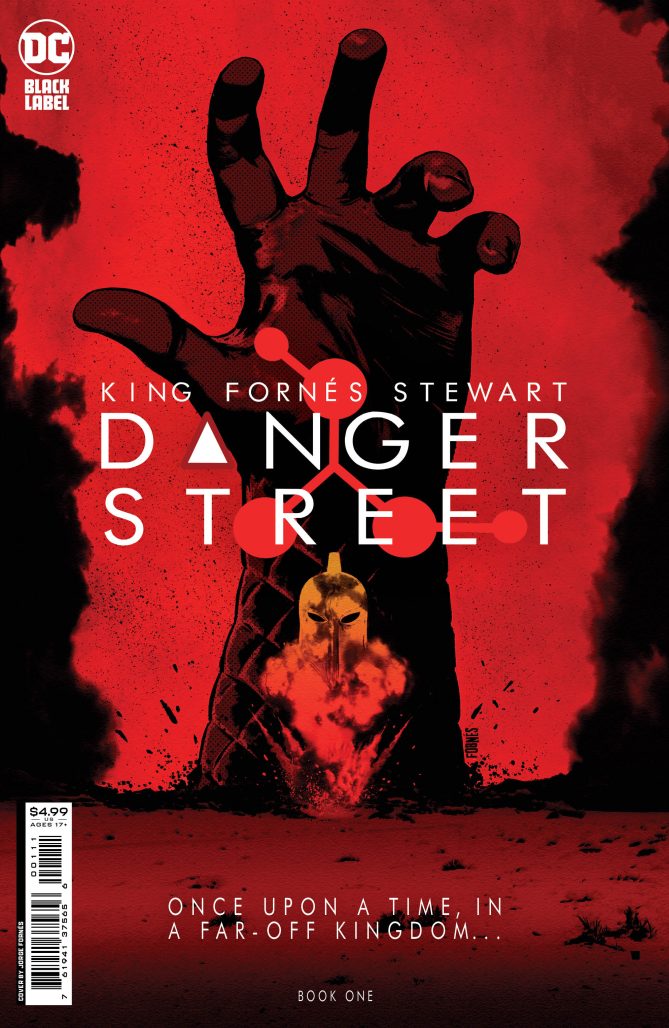
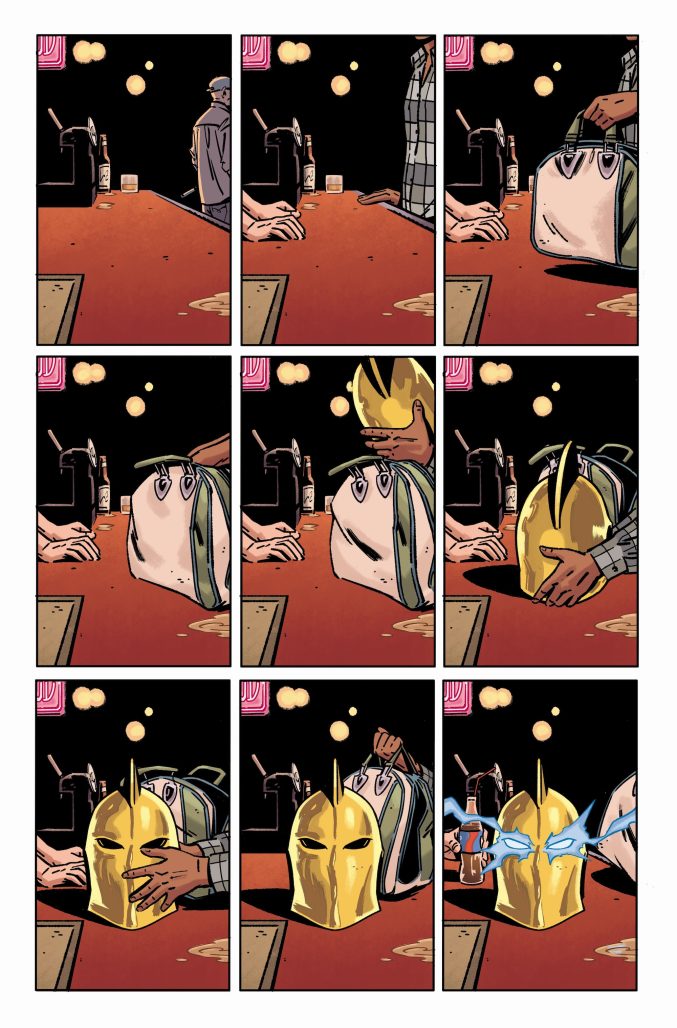
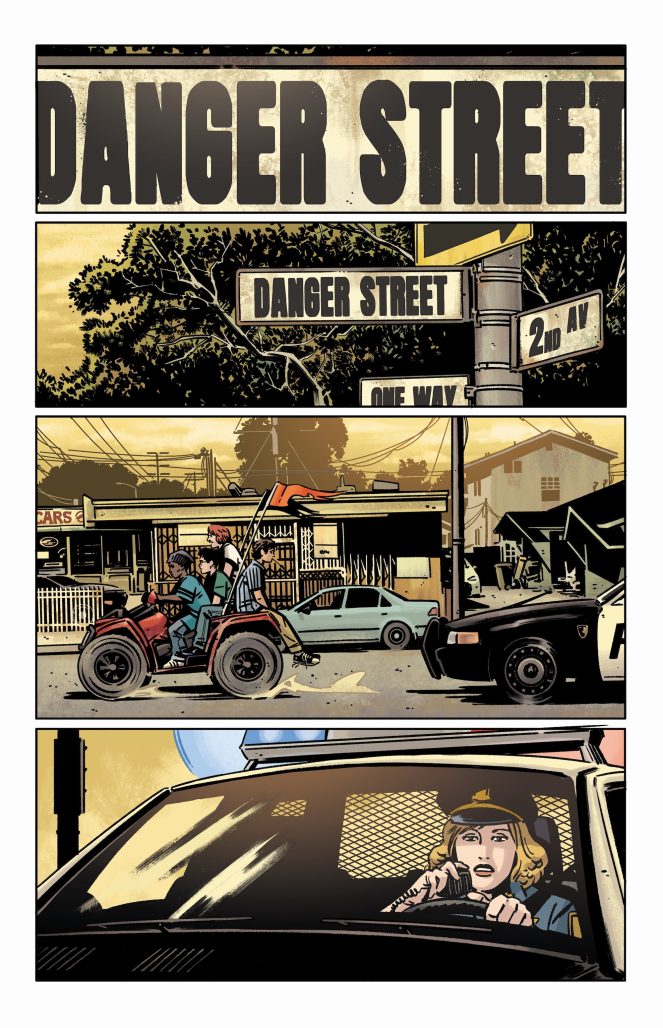
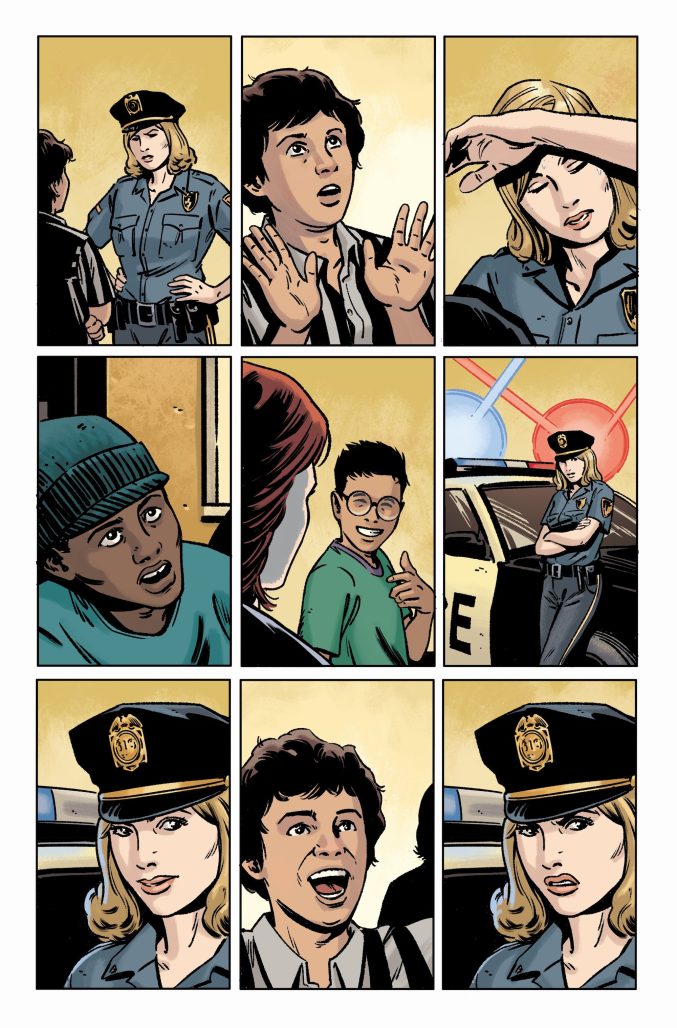
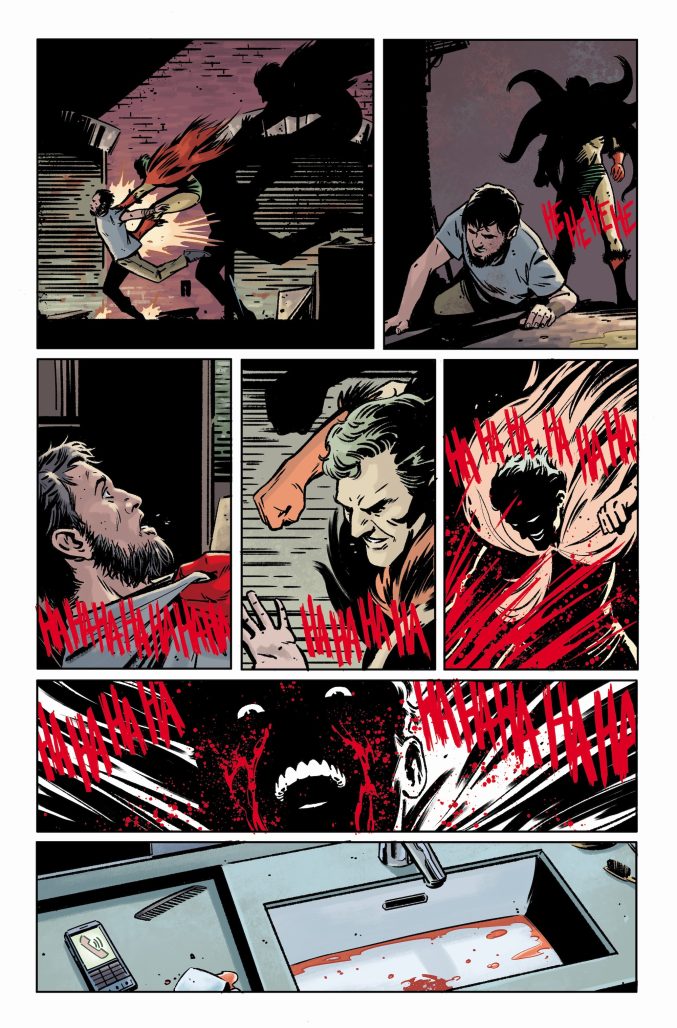
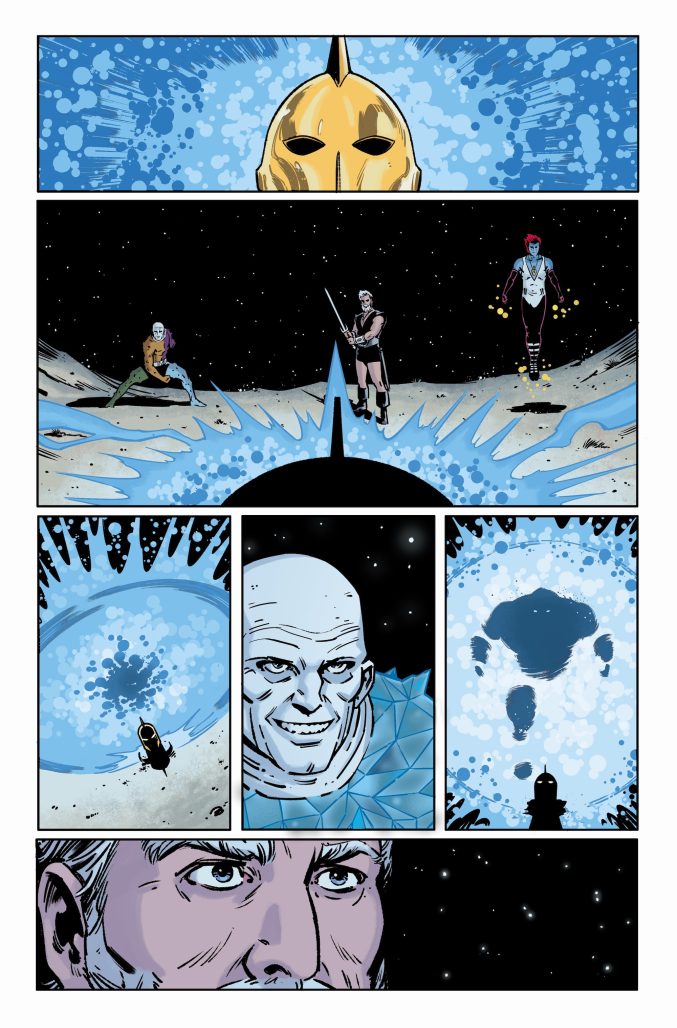
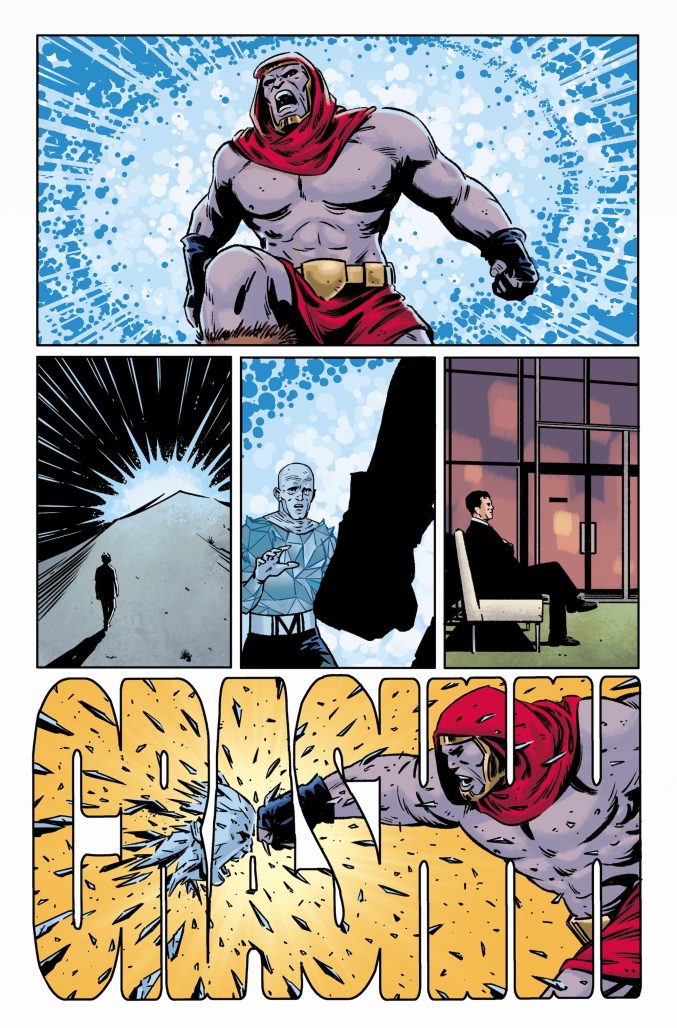
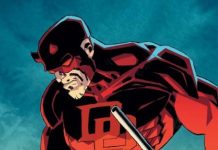





The Dr. Fate issue was amazing. I was so disappointed when Keith Giffen took over on Dr. Fate, but I think Walt was mostly at Marvel by then, pencilling Thor.
Simonson went on to do a bit of Hercules Unbound (a great weird Bronze Era DC book that was collected in the B/W Showcase Presents book The Great Disaster – pick it up), and a couple Detective Issues where he co-created Dr Phosphorus with Engelhart, and some other bits and bobs. He didn’t get to Thor until 1983.
Great interview, although I’ll disagree with King here and say that almost all of the issues of this series are worth reading. DC recently collected them in HC and I really enjoyed them.
For all of Lady Cop being silly, she was basically a comics version of Police Woman starring Angie Dickinson. Her story is a lot better than I thought it would be.
Comments are closed.